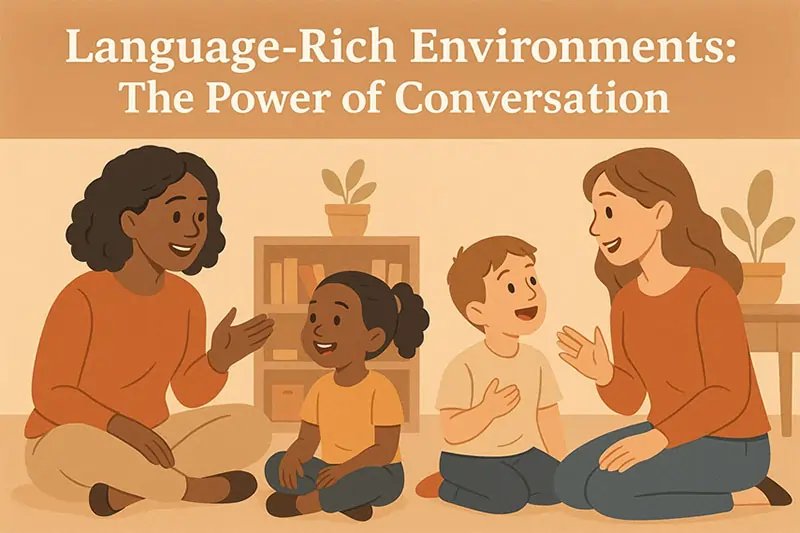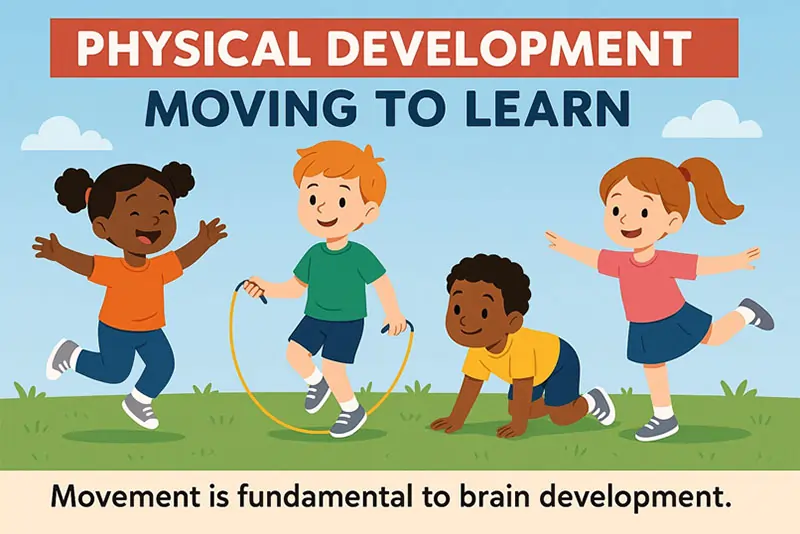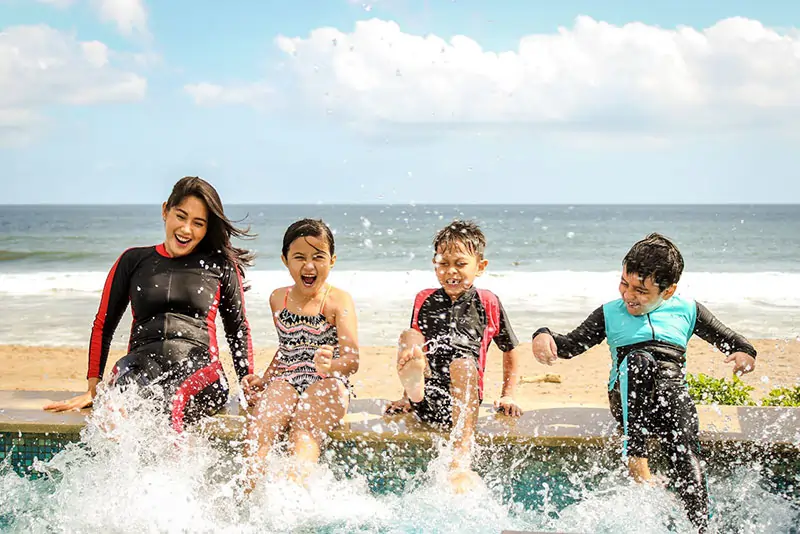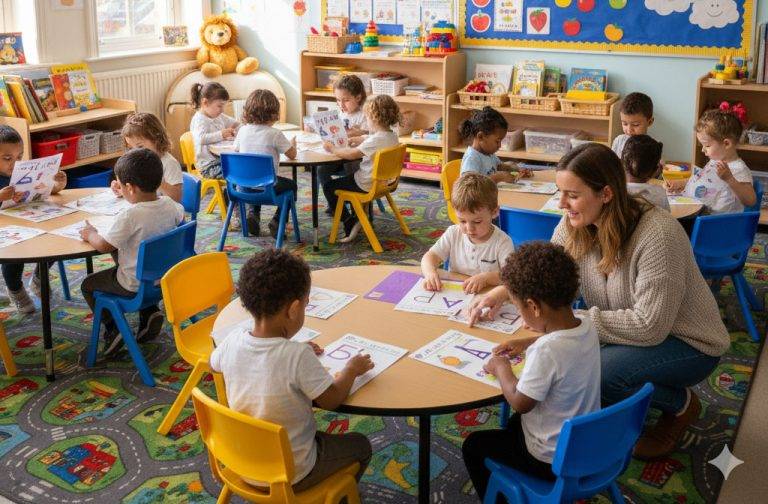Comprehensive Guide to Child Development: Essential Methods for Nurturing Growth
Complete Handbook on Child Development: Key Strategies for Encouragement of Development Encouraging a child’s development is both a privilege and a responsibility on the road of parenthood. Modern studies keep exposing the amazing plasticity of young brains and the great influence early events have on lifetime learning, behavior, and well-being. This all-inclusive guide looks at evidence-based methods to help your child’s whole development and provides doable daily activities for integration into family life.
1. The Foundation: Responsive Relationships
Healthy child development is mostly dependent on secure attachment developed by consistent, responsive care. Parents or other caregivers build a basis of trust that supports inquiry and learning when they consistently respond to a child’s needs with warmth and sensitivity.
Key practices:
- Practice active listening when your child speaks, maintaining eye contact and responding thoughtfully
- Create daily rituals of connection (morning greetings, bedtime routines, family meals)
- Validate emotions while helping children develop regulation skills (“I see you’re feeling frustrated. Let’s take a deep breath together.”)
- Provide physical affection appropriate to your child’s preferences
- Respond consistently to cries and expressions of need, especially in infancy
Children who experience secure attachment show, on average, more emotional resilience, social competency, and cognitive development over life according to studies.

2. Language-Rich Environments: The Power of Conversation
Among early childhood’s most amazing developmental successes is language acquisition. Children’s vocabulary size by age three highly predicts later academic success, thus language-rich surroundings are quite important.
Effective approaches:
- Engage in frequent, back-and-forth conversations with children, even before they can respond verbally
- Read aloud daily, using animated voices and discussing the story
- Narrate your activities and explain concepts you encounter throughout the day
- Ask open-ended questions that encourage thinking and elaboration
- Introduce new vocabulary words regularly, using them in meaningful contexts
- Sing songs and recite rhymes that play with language sounds
A child’s language development can be much improved and a lifetime love of learning encouraged by even fifteen minutes of daily reading.
3. Play-Based Learning: The Work of Childhood
Although structured activities and instructional materials have their value, studies repeatedly show that child-directed play is still the best tool for development in many different spheres. Children acquire critical thinking, problem-solving ability, creativity, and social-emotional competency through play.
Types of beneficial play:
- Free, unstructured play time with simple, open-ended materials
- Imaginative and pretend play that develops narrative thinking
- Construction play with blocks, LEGO, or natural materials
- Outdoor exploration that engages all senses
- Social play with peers that builds negotiation skills
Interestingly, even digital play can offer developmental benefits when carefully selected. For instance, certain types of interactive games known as “clickers” can help children develop persistence, strategic thinking, and resource management skills. Unlike passive screen entertainment, well-designed educational clicker games on platforms like PlayGama (https://playgama.com/category/clicker) engage children in problem-solving as they make choices, observe outcomes, and adjust strategies—similar to the iterative learning process found in traditional games like chess or building blocks. As with all digital content, these should comprise just one small component of a balanced play diet, with appropriate time limits and parental involvement.
4. Executive Function: Building the Brain’s Control Center
Children’s academic performance and life outcomes are powerfully predicted by executive function skills including working memory, inhibitory control, and cognitive flexibility. These abilities enable youngsters to remember directions, control impulsive behavior, and adjust to changing circumstances.
Strategies to strengthen executive function:
- Play games involving turns, rule following, and self-control (Simon Says, Red Light/Green Light).
- Establish consistent routines and progressively bring about reasonable changes.
- Divide difficult jobs into smaller steps.
- Model planning by means of spoken language (“First we need to clean up, then we’ll have dinner, and afterward we can read a story”).
- Provide scaffolding that gradually decreases as children master skills
- Children should be encouraged to create and carry out their own basic plans
Harvard’s Center on the Developing Child’s research indicates that these abilities grow from practice and supportive relationships rather than being natural.

5. Physical Development: Moving to Learn
Development of the brain depends fundamentally on movement. While building coordination, balance, and spatial awareness, physical exercise strengthens neural connections. Frequent exercise also supports good sleep habits, mood control, and attention span.
Movement opportunities to incorporate daily:
- Unstructured outdoor play in varied environments
- Activities that develop gross motor skills (running, jumping, climbing, swimming)
- Fine motor practice through art, building, and practical life skills
- Dance, yoga, or martial arts that combine movement with mindfulness
- Family activities like hiking, biking, or ball games
- Simple obstacle courses that challenge multiple movement skills
Children should get at least sixty minutes of physical activity every day, ideally including both planned and unstructured movement options.
6. Emotional Intelligence: The Heart of Social Success
For life success, emotional intelligence—the capacity to recognize, understand, express, and control emotions—proves equally vital as cognitive ability. Strong emotional intelligent children show more resilience in overcoming obstacles and negotiate relationships more effectively.
Practices that build emotional intelligence:
- Share your own emotions in age-appropriate ways
- Label emotions clearly to develop emotional vocabulary
- Accept all emotions while guiding suitable expression
- See disagreements as chances for honing perspective-taking
- Read and talk about stories with emotional challenges
- Not only during upsets, but also actively
- Practice calming techniques
- Observe and praise children’s attempts at emotional control.
Though it follows a predictable pattern, emotional growth differs greatly among individual children. As children progressively acquire these sophisticated skills, patience and modeling are vital.
7. Nurturing Curiosity: Fostering a Growth Mindset
Mindet and Curiosity Young children naturally have questions and a need to make sense of their environment. By their answers to questions, mistakes, and challenges, parents can either encourage or unintentionally deter this natural drive.
Approaches that preserve natural curiosity:
- Answer questions with real interest; when you don’t know, research answers together
- Emphasize effort, tactics, and development instead of fixed qualities
- Frame mistakes as teachable moments
- Model your own curiosity, learning, and resilience
- Provide suitably demanding experiences (not too simple, not too difficult)
- While progressively broadening your child’s horizons, follow their interests
- Avoid “correct” responses and instead use open-ended questions that inspire discovery
Children who see intelligence as developable rather than fixed show more persistence and success over time, according to Carol Dweck’s studies on mindset.
8. Creative Expression: Developing Unique Voices
Creative pursuits foster divergent thinking, emotional expression, fine motor skills, and cognitive flexibility. The process of creation provides the best developmental advantages instead of the output.
Ways to encourage creativity:
- Give children access to a range of art materials
- Value process over product, asking questions rather than evaluating outcomes
- Expose them to many musical, artistic, dance, and narrative traditions
- Limit models or examples that might stifle original thinking
- Create areas where messy exploration is welcome
- Incorporate creative thinking into daily problem-solving
- Respect children’s unique aesthetic tastes and creative choices
Studies show that creative thinking abilities span many disciplines, so supporting innovation in science, mathematics, and other fields often regarded as apart from “the arts.”
9. The Role of Nature: Connecting with the Natural World
Regular exposure to natural surroundings offers special developmental advantages including improved attention, less stress, better observational skills, and more physical competence. Finding chances for nature connection helps to promote good development even in cities.
Simple ways to incorporate nature:
- Take regular outdoor excursions to parks, forests, beaches, or nature reserves
- Create nature rituals like morning garden visits or evening stargazing
- Encourage natural material collections and observations
- Plant and tend gardens together, even in small containers
- Bring natural materials indoors for play and exploration
- Observe seasonal changes and discuss ecological relationships
- Practice mindful sensory awareness outdoors
Children who routinely encounter nature show better concentration, creativity, and emotional well-being according to studies.
10. Media Literacy: Navigating the Digital Landscape
Complete technology avoidance is neither desirable nor practical in the world of today. Rather, parents can guide their children toward sensible media consumption and critical thinking that will benefit them all through life.
Balanced approaches to technology:
- Establish clear boundaries around screen time, with emphasis on interactive rather than passive consumption
- Preview content and participate in media experiences alongside children
- Discuss messages, techniques, and values presented in the media
- Balance technology use with abundant offline experiences
- Teach respectful digital citizenship and online safety
- Use technology as a tool for creation, not just consumption
- Model healthy technology habits yourself
Though the American Academy of Pediatrics offers useful age-based recommendations, research indicates that the context and content of media use counts more than rigorous time limits.
Conclusion: The Parental Journey
Encouragement of child development is more about presence than perfection. Every child follows a different developmental path shaped by temperament, surroundings, events, and relationships. Attentive presence is the most potent gift parents can give their child—space
to see, react to, and delight in their developing capacities. Recall that your capacity to help your child grow depends mostly on your own state of health. Effective parenting starts with giving self-care top priority, preserving supportive relationships, and meeting your own needs. Your child will be able to flourish developmentally and experience the wonder and delight of childhood if you combine the strategies described in this guide in ways that honor both their particular character and your family’s values.


